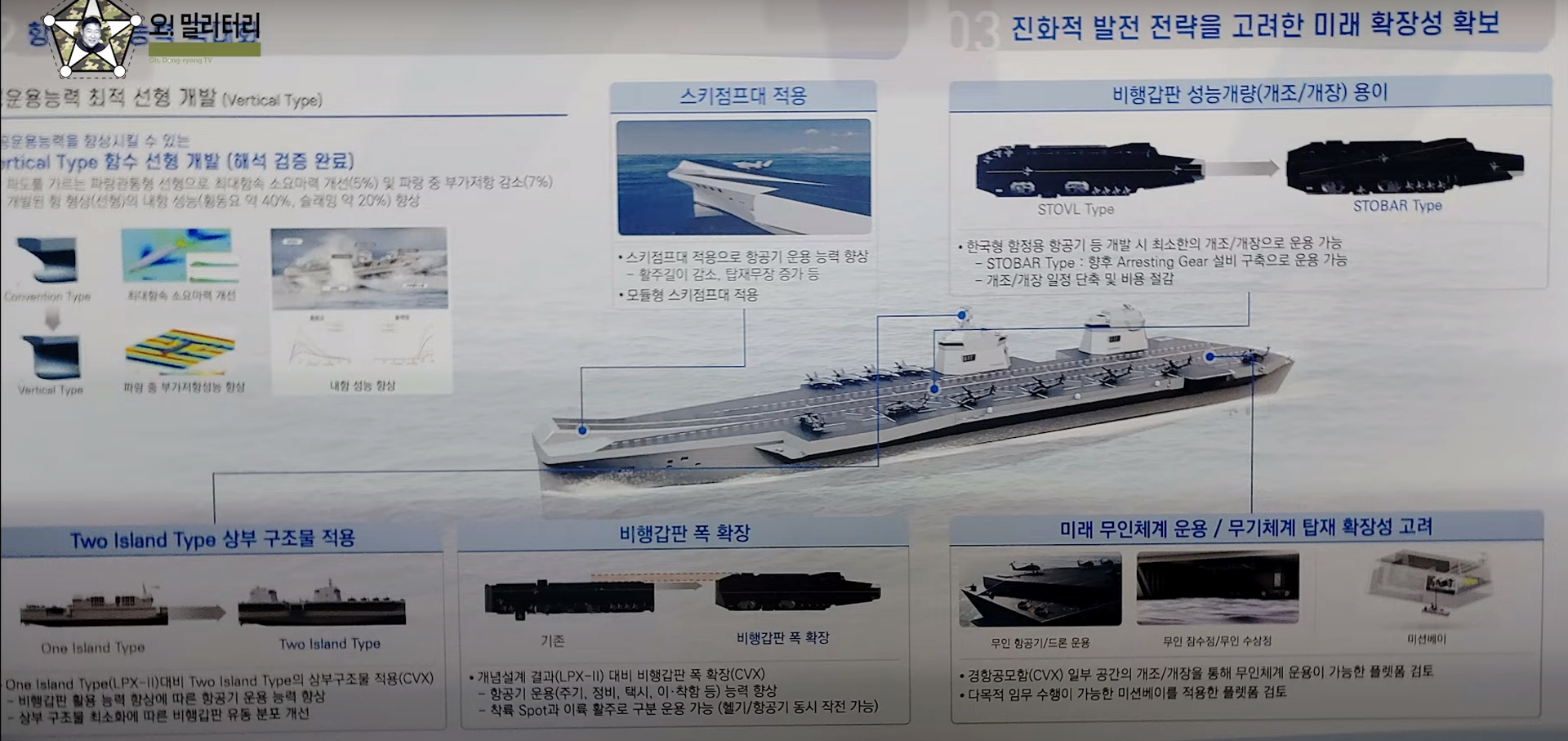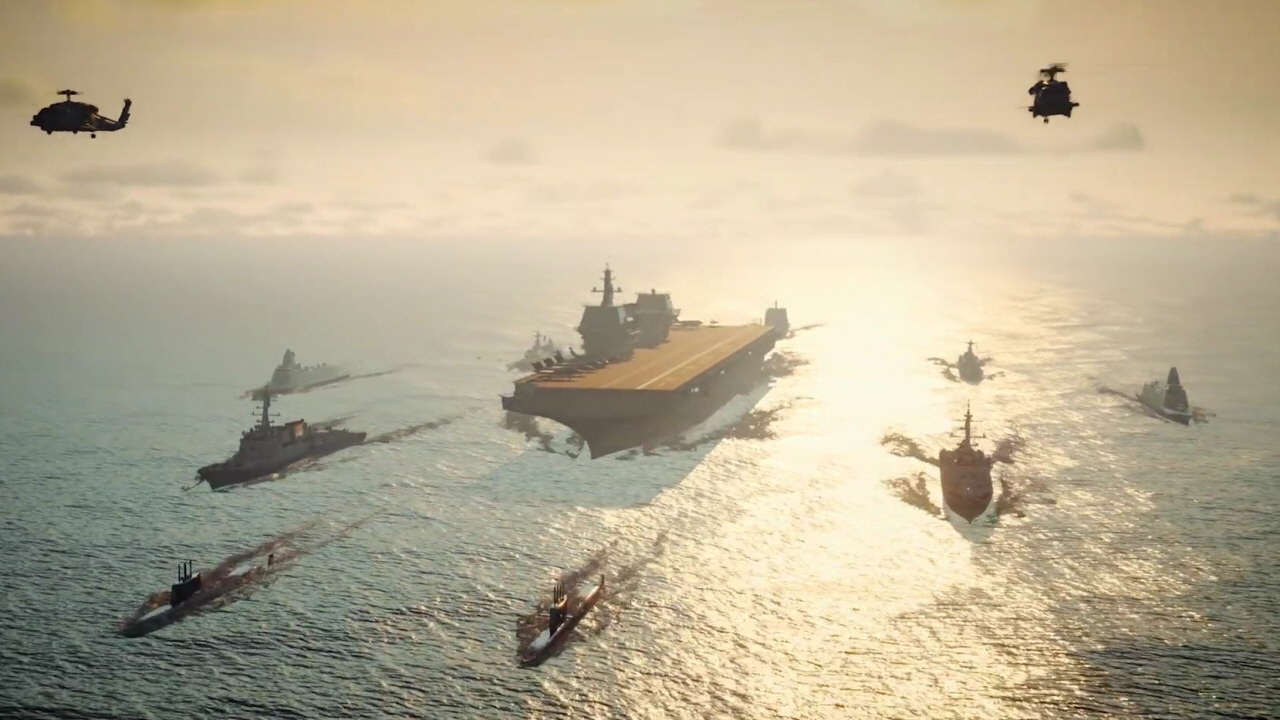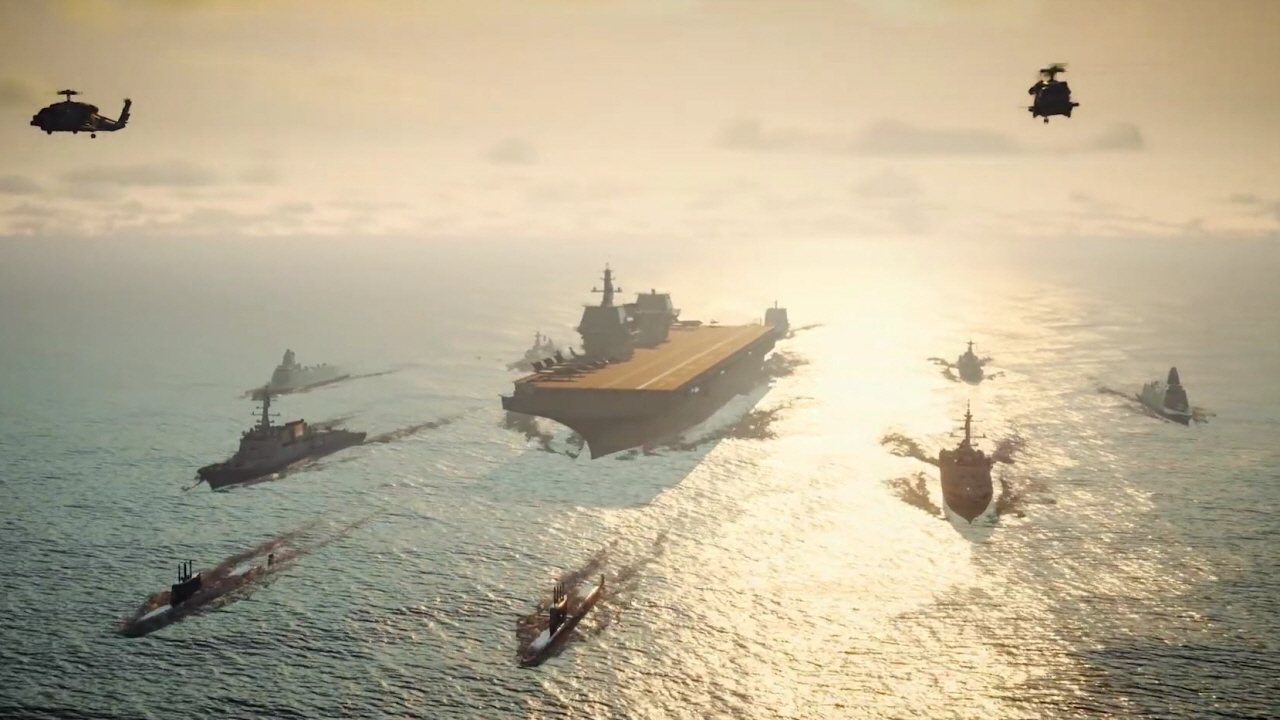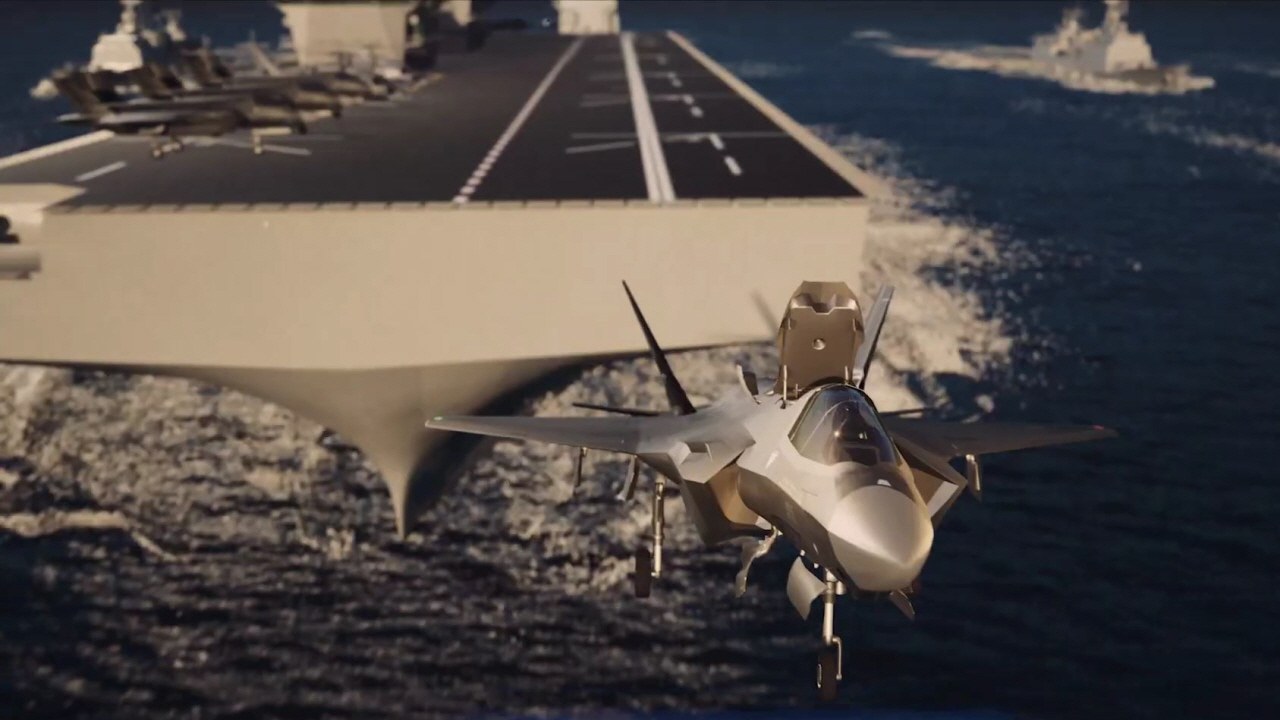A computer generated image of the CVX aircraft carrier / Courtesy of Republic of Korea NavyBy Kim Hyun-binHyundai Heavy Industries (HHI) and Daewoo Shipbuilding & Marine Engineering (DSME) are in...
m.koreatimes.co.kr
Hyundai Heavy Industries (HHI) and Daewoo Shipbuilding & Marine Engineering (DSME) are in a heated race to win a 2 trillion won ($1.7 billion) order to build Korea's first aircraft carrier, known as the CVX.
The sheer size of the first aircraft carrier project for the two shipbuilders could lead to additional deals for such huge vessels both domestically and abroad.
According to sources, the defense ministry is expected to start receiving bids for the preliminary design of the CVX as early as next year ― the project is worth 3 trillion won with the construction accounting for over 2 trillion won.
The vessel will weigh 30,000 tons with a length of 260m and width of 40m. That size will make the aircraft carrier capable of transporting 12 F-35B and eight attack helicopters. The vessel can carry up to 16 fighter jets by reducing the number of helicopters.
If the National Assembly passes the budget for the CVX at the end of this year, the preliminary design will take around two to three years to complete, while construction will take five to seven years.
In October 2019, HHI was assigned to provide a conceptual design for the vessel, which was finished in December last year. The start of the preliminary bidding will officially mark the launch of the CVX project.
Only HHI and DSME are allowed to participate in the CVX bid and the two companies have been busy expanding cooperation with both local and foreign firms to win the order. HHI recently signed a memorandum of understanding (MOU) with Korea Aerospace Industries (KAI), which is the only domestic company capable of building fighter jets as well as military helicopters.
In August, HHI also inked a partnership with one of the UK's leading shipbuilders, Babcock International, which took part in the development of the Queen Elizabeth-class aircraft carrier and possesses state-of-the-art technology in construction of these vessels.
In June, DSME joined hands with Italy's state-run Fincantieri, which has prior experience in developing next-generation destroyers and helicopter carriers. In August, DSME also inked an MOU with Hanjin Heavy Industries & Construction, which has built over 1,000 vessels over the last 50 years.





